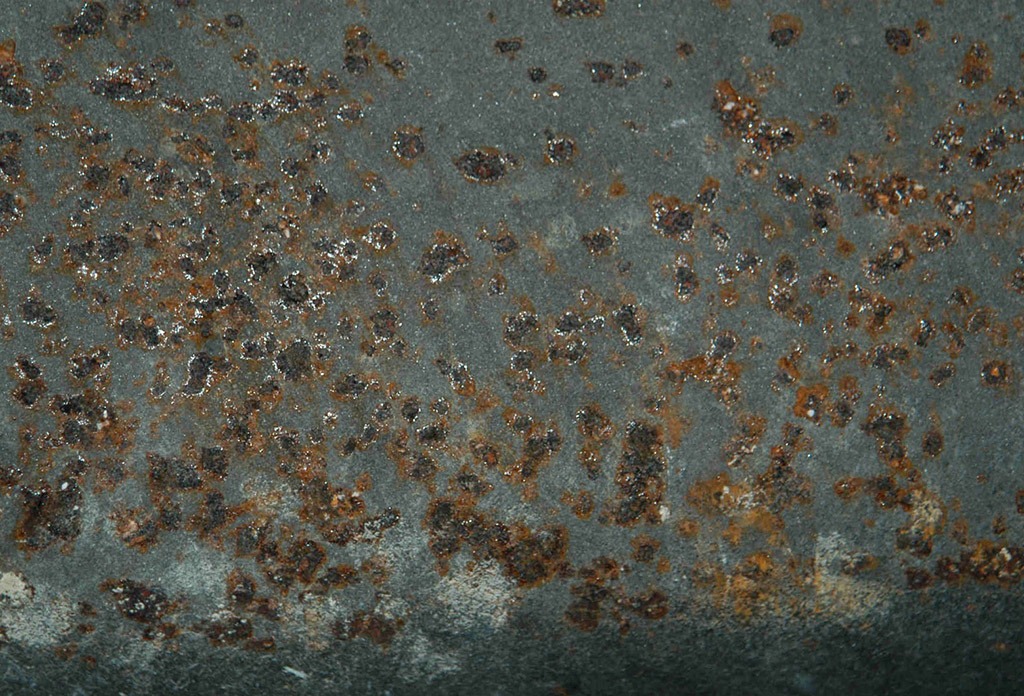Below we take a look at pitting corrosion and how you can help protect against it with different types of steel coating.
Steel is widely considered the most versatile and resilient material in building and construction. However, for all its strength, steel will eventually rust if not coated properly.
Steel corrosion can be defined as deterioration due to electrochemical reactions between the metal and its environment. There are different types of corrosion, which are contingent on different environmental factors. One of the most detrimental of these is pitting corrosion.
What Is Pitting Corrosion?
Pitting corrosion is the localised corrosion of a steel surface that is confined to a small ‘pit’ or cavity. These pits can range greatly in width and depth, some being quite narrow and deep, while others are wide and shallow. Pitting corrosion can wreak havoc on steel sections.
What Are The Different Type of Pitting Corrosion?
There are two main categories of pitting corrosion, trough pits and sideways pits.

What Causes Pitting Corrosion?
Pitting corrosion occurs when localised areas of steel lose their protective layer. This area becomes anodic, while part of the remaining metal becomes cathodic, producing a localised galvanic reaction.
Environmental factors also play a large part in pitting corrosion. For example, aggressive chemicals such as chloride, thiosulfates, fluorides and iodides in the local environment can cause oxide breaks on the protective layer, which will trigger the corrosion.
A number of factors concerning environmental and the metal can also affect the extent of pitting. For example, a sufficient supply of oxygen to the reaction site may enhance the formation of oxide and re-passivate (essentially ‘heal’) the damaged protective film.
Protecting Against Steel Corrosion With Steel Coating
Surface treatment is the most effective way to protect against pitting corrosion. Here are some of the most common you will see steel fabricators use:
Hot dipping – This galvanisation method can be used on steel of all shapes and sizes and involves immersing the steel in a bath of molten zinc at temperatures up to 450°C. Steel galvanised in this way is highly protected against corrosion as well as extreme weather conditions and this is a particularly popular approach for pipe related applications.
Zinc phosphate priming – Steel surfaces can be painted with specially formulated primers in order to improve corrosion resistance as well as boost their visual appeal, with one of the most popular applications being zinc phosphate priming.
Chemical coating – This brilliant technique uses electrostatic or compressed air to apply a specially formulated powdered material to the steel surface, following which it is melted to form a smooth protective film. Steel treated in this way is not only protected against corrosion and UV damage, it is also highly resistant to peeling, scratching and cracking.
Zinc spray metallising – While it doesn’t provide quite the same protection as hot dip galvanising, this technique is highly effective against corrosion and is popular for its smooth finish. Because this is a ‘cold process’ there is no risk of distorting the metal, making it ideal for use on ornate metal components such as railings and fences.
Need Help With A Steel Project?
If you have a project in need of steel, whether it’s supply, fabrication, drafting, or installation, talk to the experts at Steel Fabrication Services. Our dedicated team of professionals will ensure that your project goes according to plan right down to the smallest detail. Give us a call today!
While you’re here, learn more about the world of steel below:
